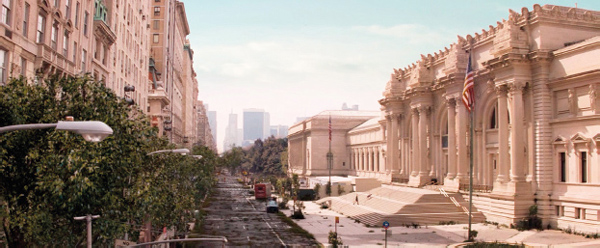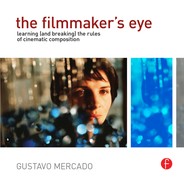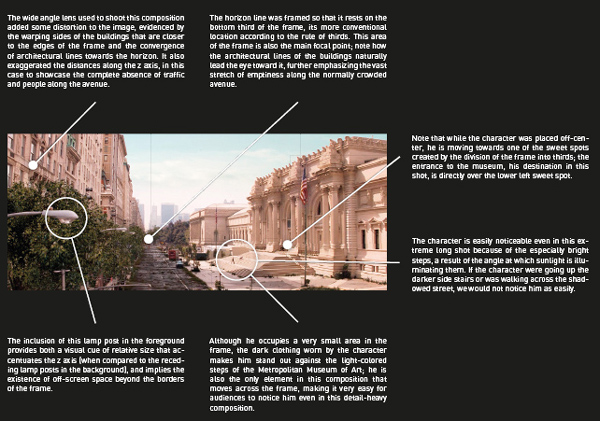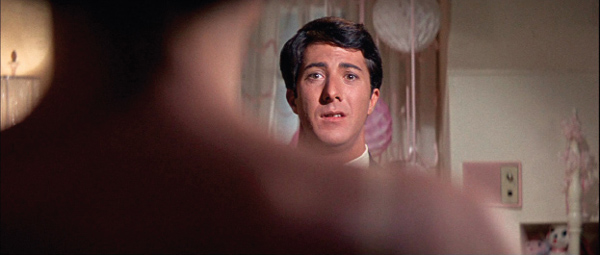extreme long shot
The extreme long shot lets you create compositions that emphasize the scale of a location. When human subjects are included in the frame, they usually occupy a very small area, and are dwarfed by their surroundings. Sometimes extreme long shots do not have a character in the frame; in this case they showcase the location itself, and are referred to as establishing shots. It is common to use establishing shots at the beginning of a scene, to let the audience know where the action that follows will take place. Another common practice is to use extreme long shots to suddenly reveal the vastness or character of a location, usually after the use of a close up where a subject reacts to something they can see but the audience cannot, heightening tension and suspense (a favorite Spielbergian device). Extreme long shots are also ideal to showcase spatial relationships and interactions between large groups of people, for instance during large battle scenes. While the perspective of shots from medium to extreme close up restrict the amount of visual information to a single subject, or even just an aspect of a single subject, the extreme long shot lets you establish visual relationships between several characters and characters and their environment. Compositional guidelines like the rule of thirds, balanced/unbalanced compositions, and Hitchcock’s rule are especially useful in the arrangement of visual elements in the frame. The wide field of view of these shots also provides enough room to contain several visual elements in the frame, making them ideal to create emblematic shots. The depth of field in these shots is usually deep, a function of the long camera to subject distances necessary to include a location and its surroundings. It is also important to remember that the amount of visual information a shot of this size can contain will normally take more time for the audience to fully register, making it necessary to keep the shot on the screen longer than other shots that contain less information. When characters are included in the frame, the composition of the extreme long shot is usually designed to let the audience compare the difference in scale between them and a location, so it is important that they are arranged within the composition in a way that will make them easily noticed.
Alain Resnais’ enigmatic Last Year at Marienbad (1961), has a famous extreme long shot that deftly exploits the guidelines of composition to create a memorable image, as seen on the opposite page. This shot, one of many fascinating and baffling visual puzzles in the film, has a symmetric composition that underlines the geometric patterns of an opulent garden, disturbed only by a number of characters standing motionless (like the statues around them) on a path at its center. Strangely, they cast long shadows on an overcast day (at an angle that breaks the order established by the rest of the visual elements in the frame), adding a surrealistic touch to the oneiric tone of the film. Only an extreme long shot could have simultaneously included all visual elements (garden, people, and sky) necessary to convey the narrative point of this shot.
This extreme long shot from Alain Resnais’ Last Year at Marienbad (1961) has puzzled audiences for decades. The symmetrical framing of the garden, possibly hinting at the inexorability of destiny, is disturbed by visitors who are strangely capable of casting shadows on an overcast day.
extreme long shot

why it works
The extreme long shot is ideal to display a vast field of view that emphasizes the scale of a location. If a subject is included in the frame, it occupies a very small area and is usually placed in a way that will let the audience easily notice the contrast in sizes. Extreme long shots can also be used as establishing shots, inserted at the beginning of a scene to introduce the audience to a location where the rest of the action will take place. This extreme long shot from Francis Lawrence’s I am Legend (2007) shows Robert Neville (Will Smith) going about a normal day as the last survivor of a plague that killed every human in New York City in 2009. The wide field of view of this shot dramatically reveals an impossibly deserted Fifth Avenue in Manhattan (made empty with the aid of CGI), and is one of several extreme long shots designed to convey the broad and total devastation caused by the plague and the loneliness and isolation felt by Dr. Neville as the last human survivor left in the city.
technical considerations
lenses
Extreme long shots benefit from the use of wide angle lenses, which provide wider fields of view and exaggerate the depth of the frame along the z axis, emphasizing the scale of subjects placed along it. It is also possible to use telephoto lenses for certain compositions when compression along the z axis is desired, but these lenses restrict the field of view and are therefore less capable to showcase the broader x axis vistas usually associated with extreme long shots. Apertures will normally be small, since most of the time these shots will be taken outdoors in daylight. Night exteriors, unless shot with available light, or as day for night or dusk for night, will be very expensive to light. While ND filtration can allow you to use wider apertures, these shots normally involve very long camera to subject distances, which result in deep depths of field (there are, however, special tilt-shift lenses that allow you to selectively shift the focus to either side of the frame over a single plane, creating the illusion of shallow depth of field if needed). The smaller format lenses found in most consumer and prosumer SD and HD cameras have an inherent advantage in this respect, making it relatively simple to compose very wide shots because of the shorter focal lengths of their native lenses.
format
Depending on the amount of visual information included in the frame, formats capable of higher resolutions (like film and higher end HD cameras) will do a better job with extreme long shots that have many small details, like an extreme long shot of a crowded city street with lots of vehicles and pedestrians. Lower resolution formats (like SD video and lower-tier HD) will be unable to render minute detail because of their inherent lower resolution, and because of the compression algorithms their formats use to record the footage. Sometimes filmmakers mix formats because of the resolution requirements of a particular shot; Fernando Meirelles and Kátia Lund, for instance, used both the Super 16 (for close ups of actors) and the Super 35 mm (for extreme long shots of the favelas) film formats in their acclaimed film City of God (2002).
lighting
Unless you have access to very powerful lights and the cranes needed to hoist them high in the air, you will most likely not be shooting extreme long shots outdoors at night. In rare circumstances, you might be able to use available light that happens to be strong enough to expose an image using film stock or digital video; for instance, by shooting under the bright lights used in some outdoor parking lots. There are options for shooting what appear to be night exterior shots, however, by shooting day for night or dusk for night, but they can severely restrict your framing by preventing you from including the sky in the shot (which would look too bright for a night shot and immediately give away the trick). Otherwise, most extreme long shots are shot outdoors using daylight, making the use of artificial lighting very rare. This does not mean that you will have no control over the lighting, however; careful planning (by monitoring weather forecasts, and using software that lets you predict the length and position of shadows at any time of the year anywhere) and location scouting can let you decide how the shot will be lit to convey something meaningful about the location. An example of this can be seen in Zhang Yimou’s Raise the Red Lantern (1991, in the emblematic shot chapter), where thoughtful scheduling allowed the shot to be taken at magic hour, taking full advantage of the unique quality of daylight during this time, thus adding beauty and poignancy to that moment in the scene.
breaking the rules

In this extreme long shot from Im Kwon-taek’s Seopyeonje (1993), Dong-Ho (Kim Kyu-chul) takes a last look at his sister Song-hwa (Oh Jung-hae) before running away from the cruel man who raised them after their parents died, an itinerant singer of Pansori (a traditional Korean style of music akin to American Blues). Instead of underlining this dramatic moment in the story with close ups of the brother and sister, Im uses extreme long shots to emphasize the vast space already in place between them, foreshadowing a separation that will last years. Note that while most of the guidelines for extreme long shots were observed, the horizon was purposely placed high in the frame, against the rule of thirds. While the composition lacks the harmony and balance the rule would offer, it intelligently exploits the resulting disharmony and unbalance it creates to emphasize the abruptness and anguish felt by the characters because of their separation.
The Graduate. Mike Nichols, 1967.


